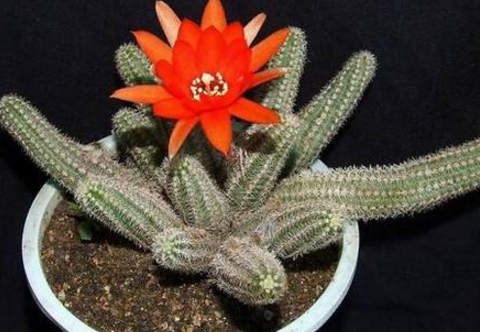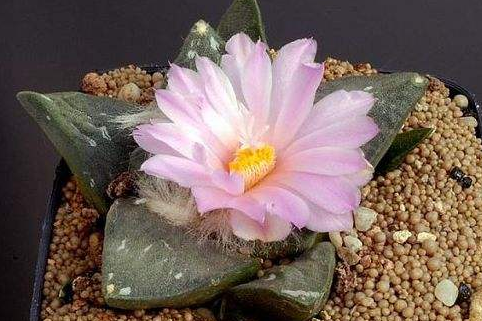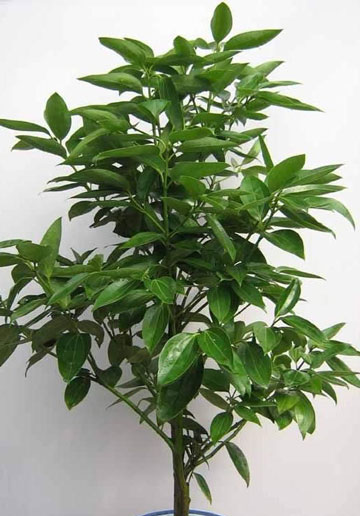How to raise white sandalwood
1. Temperature
If conditions permit, it is best to control the temperature of its growing environment, which is generally kept at around 20 degrees, with a minimum of 15 degrees and a maximum of 25 degrees. If you want to burst the basin, the dormant period is very important. if the natural ambient temperature is not allowed, it is best to artificially create a dormant period for it to keep the temperature around it below zero. If it is too cold, it will cause great harm to its growth.

2. Lighting
In order to make it grow again, it is extremely necessary to bask in the sun. Due to the problem of origin, it is very demanding for light and needs a lot of sunlight supply. And once the sun meets its needs, then the plant will show a very different beauty, but in the face of strong direct sunlight, it should also be properly shaded so that it can grow normally.
3. Moisture
Because this plant is also succulent, in general, watering should pay attention to its growing nodes. For example, it has just gone through hibernation and is about to recover. At this time, don't rush to water it. You can first slow down to see how it is growing. Probably wait until its bones have grown, you can give it a little bit of water, otherwise watering too early will easily cause the bud to fall off as soon as it grows.
The above is the introduction of how to raise white sandalwood. Let's take a look at the summer maintenance of white sandalwood.
How to raise white sandalwood cactus _ culture method of white sandalwood cactus
Cactus is a plant that people are all too familiar with. It is often bred in offices, indoors, computers and other places. It is very easy to breed and can be cultivated well without too much thought. There are many kinds of cactus, and different kinds of cactus have different shapes. White sandalwood cactus is one of them, it is a kind of cactus plant that blossoms easily. But many people in the cultivation of white sandalwood cactus is not so easy to blossom, this is mainly after the winter low temperature treatment before maintenance, will be able to bloom very gorgeous flowers. Next, let's take a look at the white sandalwood cactus how to raise, as well as the white sandalwood cactus breeding methods? [introduction of white sandalwood cactus] White sandalwood cactus, also known as cactus whip, cucurbit fist, Taurus and so on, is a flower plant belonging to the white sugar genus of the cactus family, which is native to the northern part of Argentina. White sandalwood cactus is a perennial succulent plant, its stem is not like a cactus ball shape, but is relatively slender cylindrical shape. It is tufted, and is multi-branched shape, the color of the plant is light green, very valuable, the shape of a plant is high and low scattered peaks in general. On the other hand, the low and shallow ribs are 6-9, and the ones growing above the ribs have relatively dense thorns. At the end of spring, the lateral thorn seat of the stem will be full of buds, slowly blooming red funnel-shaped flowers, and male is more, the color is Hanger and white, usually bloom during the day, but at night the flowers will be closed, the flowering time is usually 3-4 days, the flowers bloom very easily, and is very gorgeous. [growth habits of white sandalwood cactus] White sandalwood cactus likes to grow in a sunny, ventilated and dry environment. It has good shade and drought tolerance, but it is afraid of stagnant water, high temperature and strong light. The suitable temperature for growth is 15-25 degrees Celsius. In winter, the stem will be weak and red after freezing, and the temperature growth rate above 5 facilities will slow down. During the growing season, adequate water should be given, especially in a hot world, with proper shading and ventilation to keep the basin soil dry, which is similar to the general cactus cultivation method. [how to raise white sandalwood cactus] the maintenance method of white sandalwood cactus in autumn and summer is very similar to that of other kinds of cactus. In winter, the white sandalwood cactus will enter a dormant state, generally to stop watering, to keep the basin soil dry. To put in the safe indoor winter, the indoor temperature is 5-10 degrees Celsius, placed in a window with better lighting and ventilation. In winter, it is necessary to be fully dormant in order to bloom more dazzling flowers. But if the indoor temperature is relatively high, let the white sandalwood cactus begin to grow normally, so that it will not blossom, or it is not easy to bloom. [White sandalwood cactus culture method] White sandalwood cactus likes to grow in loose, fertile and well-ventilated soil, and it is most suitable to grow in vermiculite, fine sand and humus soil. It has a strong ability to withstand drought, but it also needs to be fully hydrated with different seasons. In the case of moderate temperature in spring, a small amount of watering, while in the case of sufficient light in summer, the temperature is relatively high, and the amount of water should not be too much, otherwise it will cause root rot, but in the case of excessive lack of water, the plant will appear scorch spot, wrinkle and so on, so as to reduce the ornamental value and spray water on the white sandalwood cactus to increase humidity. So that the water at the base can be fully absorbed. It is necessary to water more and fertilize more in autumn and less in winter. As long as you are given enough water, you will be able to grow normally.
More information about elderberry fruit pictures what are the varieties of hypericum peony flower picture fragrant picture dripping Guanyin leaves yellowing
White sandalwood picture guide: how to raise white sandalwood / white sandalwood how to breed white sandalwood business card white sandalwood breeding methods and matters needing attention introduction of white sandalwood perennial fleshy herbs, thin barrel-shaped stems, light green. It has 6-9 file://C:UsersADMINI~1AppDataLocalTempSGTpbq1088****F3B8B2F.gif edges. The bristles are white. Flowers lateral, bright red funnelform. The cultivated varieties are mountain blows. Morphological characteristics of white sandalwood plant fleshy stem slender tube-shaped, much branched. Erect at first, creeping behind, light green in color. With 6-9 low shallow ribs. There are 10-15 white burr-like radiation thorns without thorns. Cultivation techniques of white sandalwood Rizhao: all-day sunshine. Temperature: the suitable temperature for growth is 20 ℃ ~ 30 ℃. Under the condition of dry soil, more than 0 ℃ can survive the winter safely. Moisture: in the period of exuberant growth, the soil can be slightly moist, dry and thoroughly, and water is cut off in winter. Soil: rotten leaf soil and river sand are mixed with a small amount of calcareous material to form nutrient soil. Nutrients: 1200 times compound fertilizer was applied for 2 to 3 times during the growing period, and nitrogen fertilizer was avoided. The distribution area of white sandalwood is the hillside of western Argentina. White sandalwood reproduces by dividing balls or sowing seeds. The role of white sandalwood plant is small, large and beautiful flowers, for the famous small potted plant, can be used for desk, windowsill and other display. White sandalwood pictures
- Prev

Maintenance of rock peony in winter
Keep plenty of light in winter. It's best to keep the temperature above 10 ℃, but it doesn't need to be too high. In winter, rock peonies generally do not need to be watered when they enter the dormant period, just keep the soil dry. After reading the above, do you think rock peony is not easy to raise at all? In fact, these things seem troublesome.
- Next

one。 The Culture Environment of Ping an Tree
Safe trees like warm, humid, sunny environment, like light and shade, like warm heat, no frost and snow, foggy and hot places, do not tolerate drought, stagnant water, cold and dry air. Artificial cultivation should use acid sandy soil which is loose and fertile, well drained and rich in organic matter, and the suitable temperature for growth is 20 ℃-30 ℃.
Related
- Fuxing push coffee new agricultural production and marketing class: lack of small-scale processing plants
- Jujube rice field leisure farm deep ploughing Yilan for five years to create a space for organic food and play
- Nongyu Farm-A trial of organic papaya for brave women with advanced technology
- Four points for attention in the prevention and control of diseases and insect pests of edible fungi
- How to add nutrient solution to Edible Fungi
- Is there any good way to control edible fungus mites?
- Open Inoculation Technology of Edible Fungi
- Is there any clever way to use fertilizer for edible fungus in winter?
- What agents are used to kill the pathogens of edible fungi in the mushroom shed?
- Rapid drying of Edible Fungi

